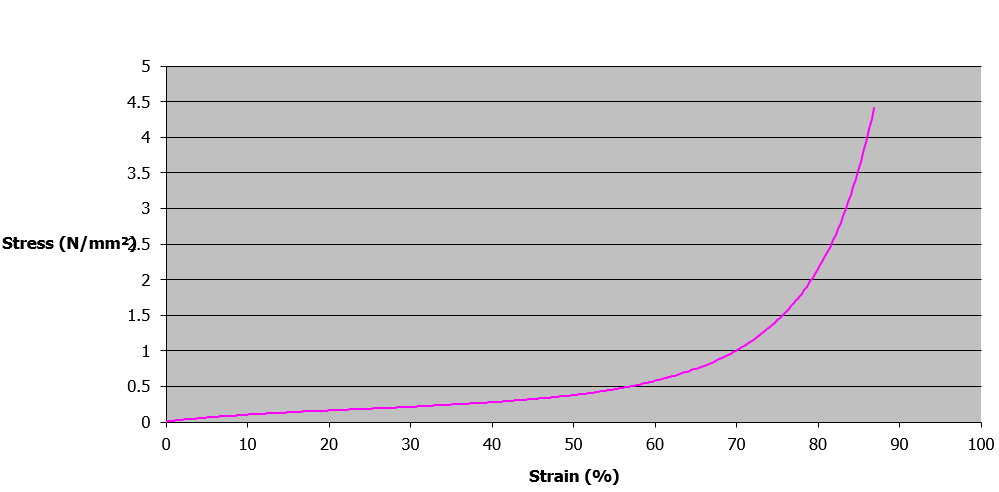-
-
April 28, 2021 at 5:53 pm
Mahdi_171
SubscriberHi,
I have done a uniaxial compression test of a polyurethane foam sample, but I can't determine which model I should use for curve fitting. I watched the hyperelasticity course video, and the instructor says that we can use the Ogden foam model for foams with high compressibility. I am not sure if the PUR foam I am testing can be considered compressible or not from the test results.
April 30, 2021 at 8:18 am1shan
Ansys EmployeeThe poison's ratio of a structure is a measure of its compressibility. Most materials have Poisson's ratio values ranging between 0.0 and 0.5. A perfectly incompressible isotropic material deformed elastically at small strains would have a Poisson's ratio of exactly 0.5 (example is rubber). A metal with a typical poison's ratio of .3 or so is compressible. Interestingly when the material undergoes large plastic deformation, the poisson's ratio transitions to 0.5 and it actually turns to be incompressible. For open-cell polymer foams, Poisson's ratio is near zero( and most have <0.2), since the cells tend to collapse in compression. Given that you can assume the PUV foam to be compressible in most case(there are exceptions of rigid foams and cases like https://www.osti.gov/pages/servlets/purl/1457403 which show low compressibility). You could try using both blatz-ko, ogden foam model and see which better fits your experimental data. Check these links for more info on hyperelastic models, experimental testing and curve fitting- /courses/index.php/courses/hyperelasticity/, https://ansyshelp.ansys.com/account/secured?, https://ansyshelp.ansys.com/account/secured?, https://abaqus-docs.mit.edu/2017/English/SIMACAEMATRefMap/simamat-c-hyperfoam.htm.
Regards Ishan.
April 30, 2021 at 10:02 pmMahdi_171
SubscriberDear Thank you for your explanation. I have tried the models you suggested, and I don't know why the Ogden-foam model doesn't want to curve fit. Does it require more than the uniaxial that I am providing?
 The blatz-ko model worked, but the fit wasn't good with both error criteria. Any ideas why the curve fitting option is not appearing in the image?
The blatz-ko model worked, but the fit wasn't good with both error criteria. Any ideas why the curve fitting option is not appearing in the image?
Thank you.

Viewing 2 reply threads- The topic ‘Hyperelastic model of PUR foam’ is closed to new replies.
Ansys Innovation SpaceTrending discussionsTop Contributors-
3572
-
1188
-
1076
-
1063
-
952
Top Rated Tags© 2025 Copyright ANSYS, Inc. All rights reserved.
Ansys does not support the usage of unauthorized Ansys software. Please visit www.ansys.com to obtain an official distribution.
-
The Ansys Learning Forum is a public forum. You are prohibited from providing (i) information that is confidential to You, your employer, or any third party, (ii) Personal Data or individually identifiable health information, (iii) any information that is U.S. Government Classified, Controlled Unclassified Information, International Traffic in Arms Regulators (ITAR) or Export Administration Regulators (EAR) controlled or otherwise have been determined by the United States Government or by a foreign government to require protection against unauthorized disclosure for reasons of national security, or (iv) topics or information restricted by the People's Republic of China data protection and privacy laws.












